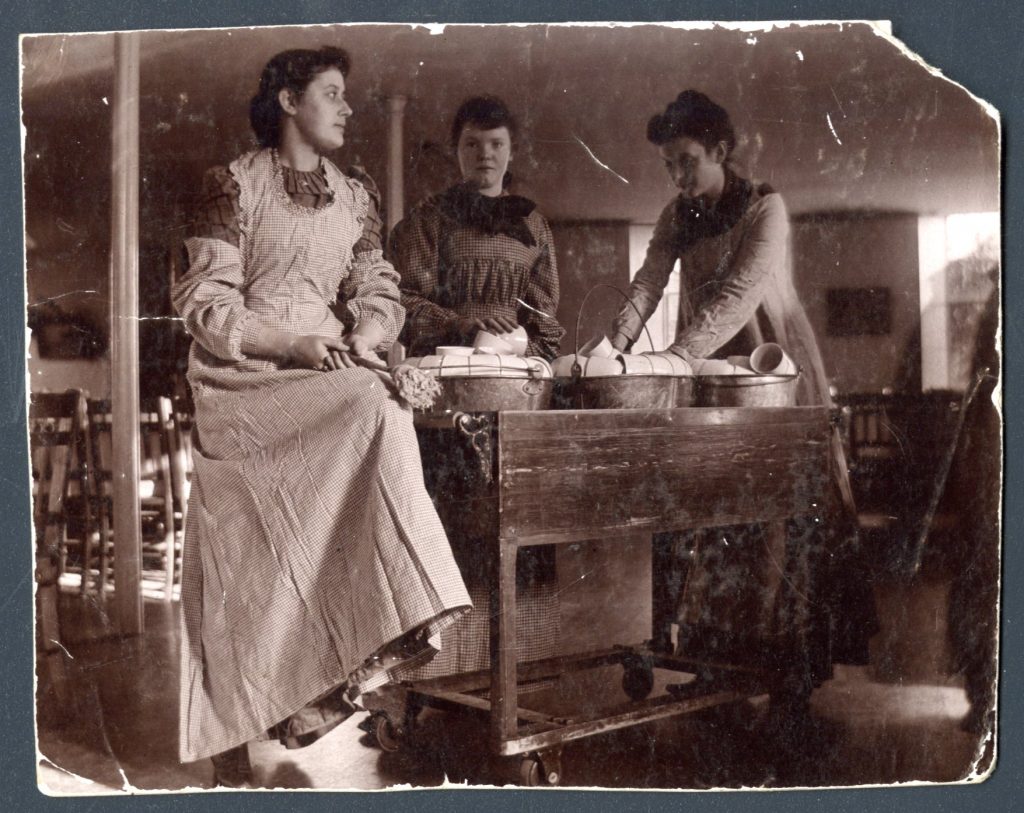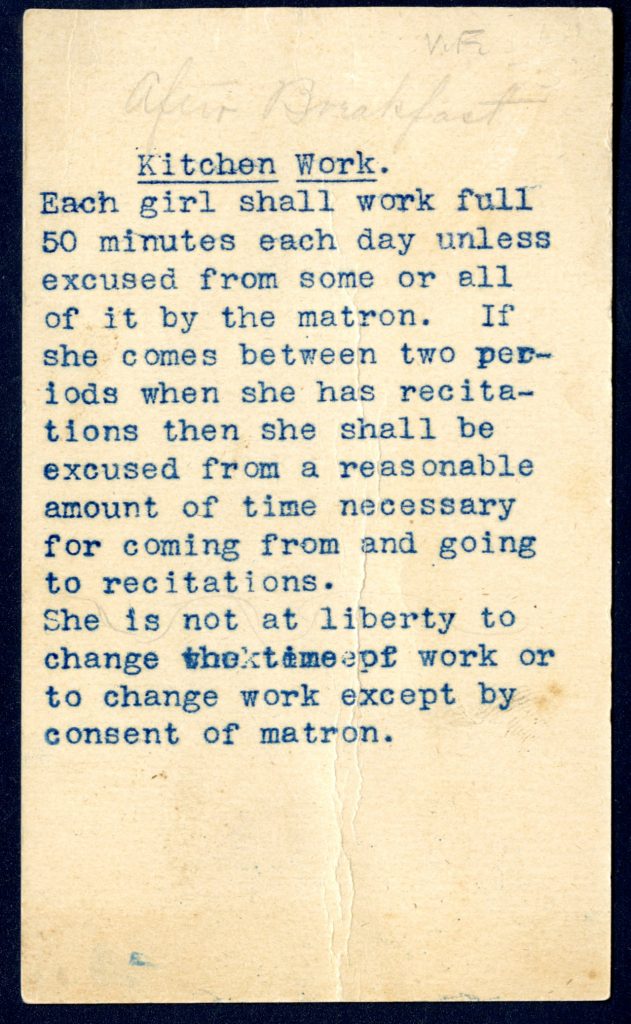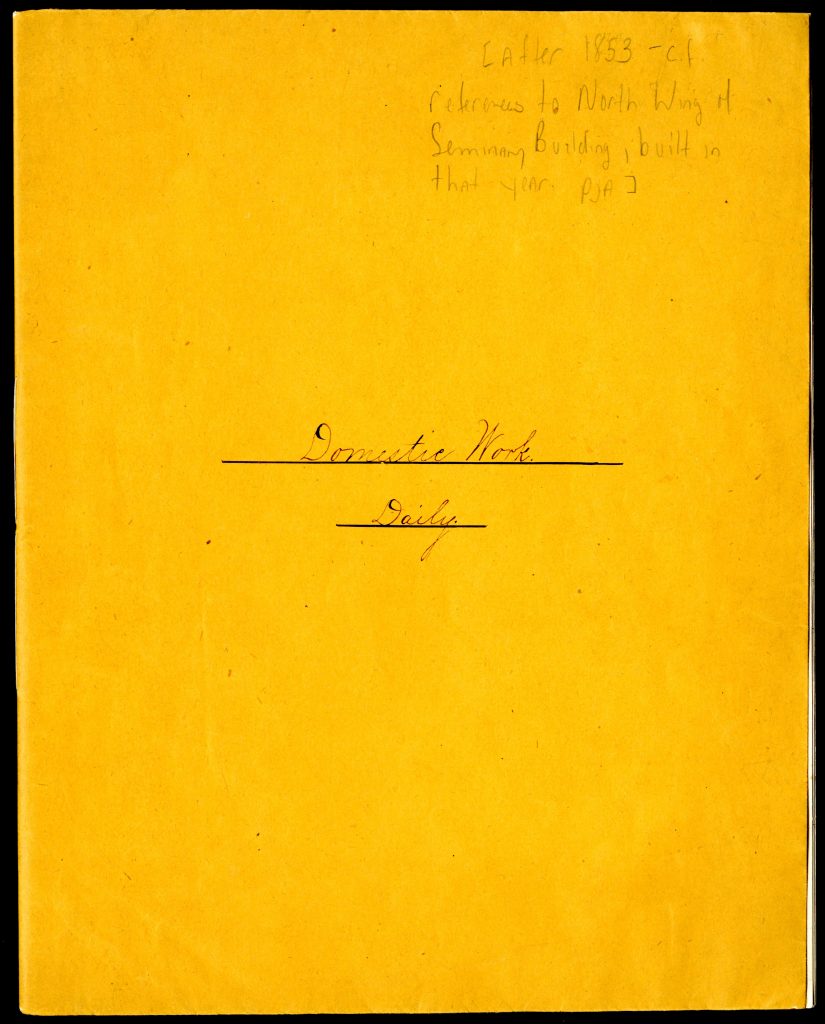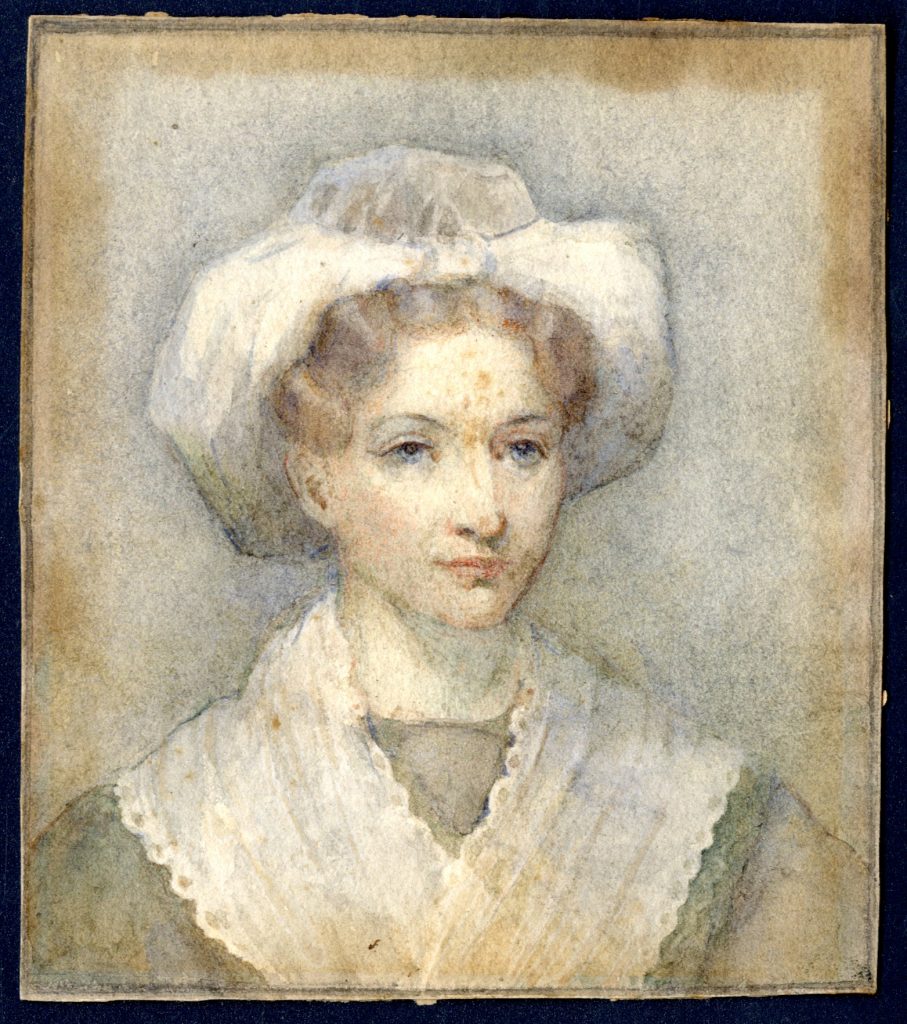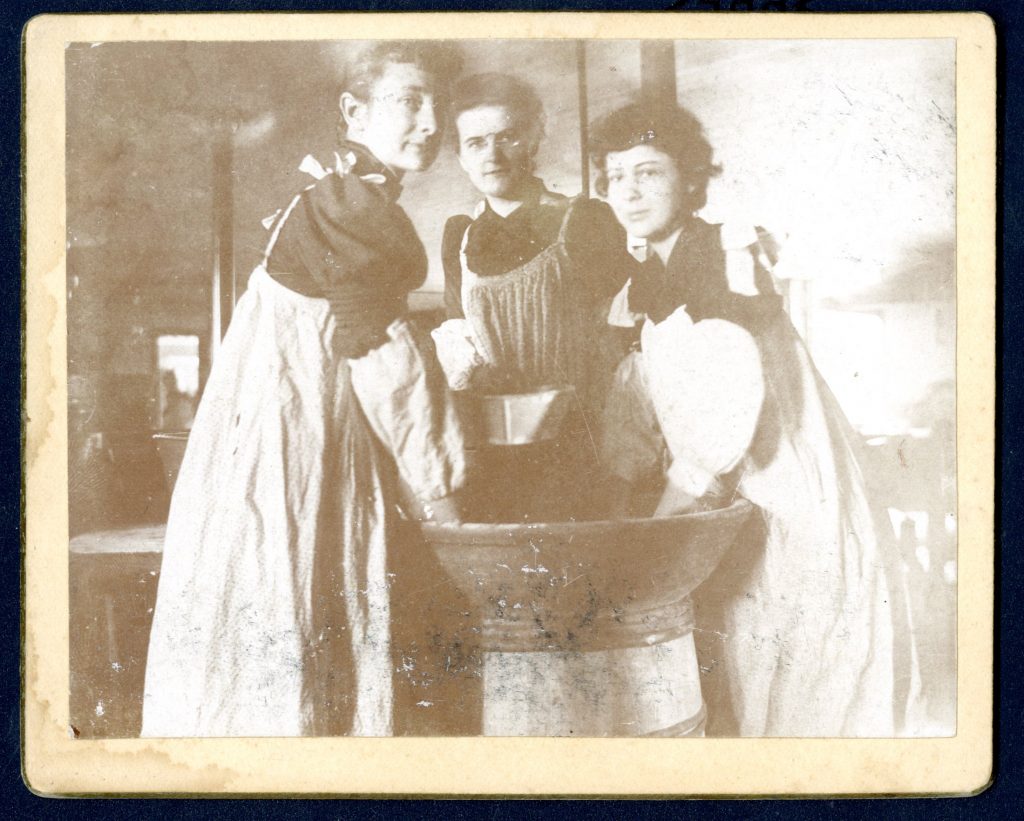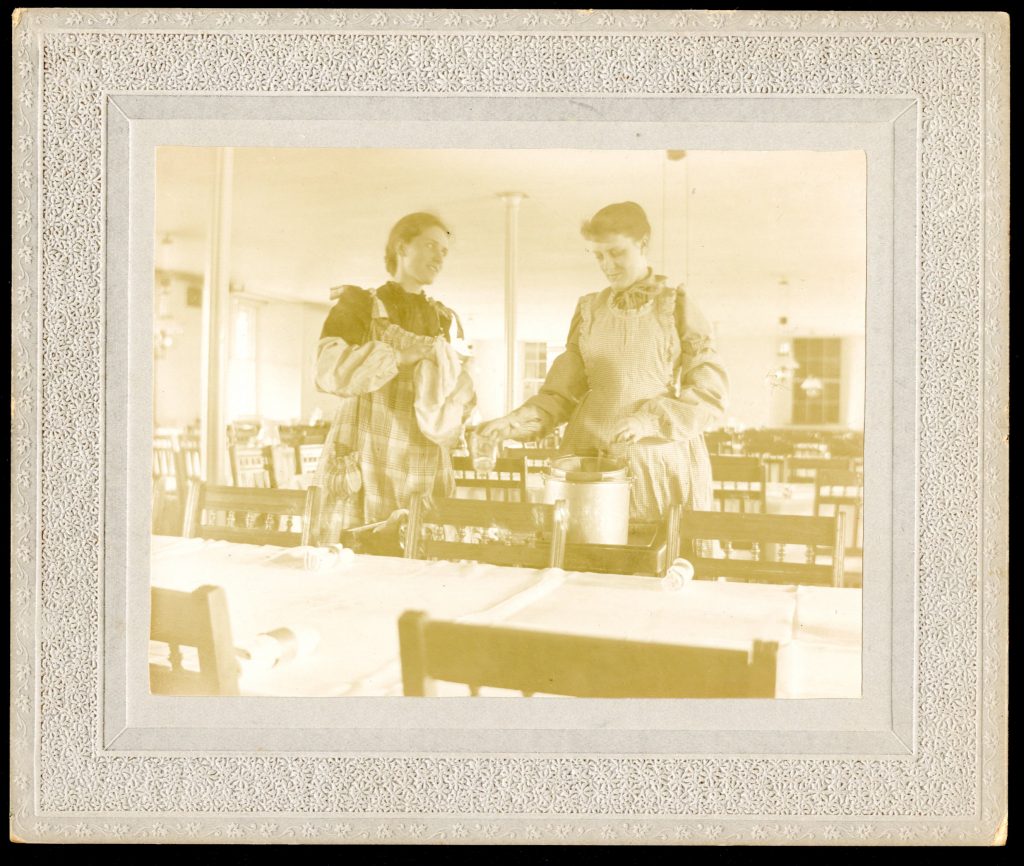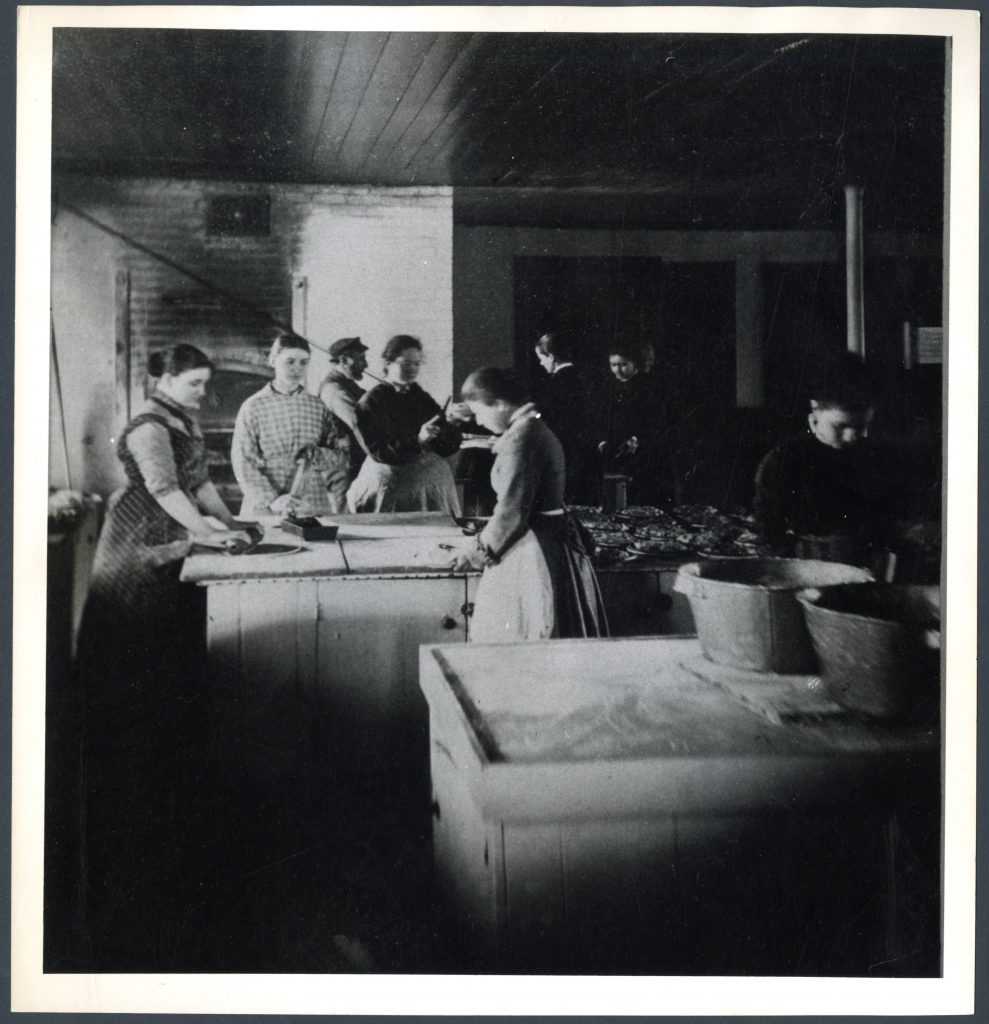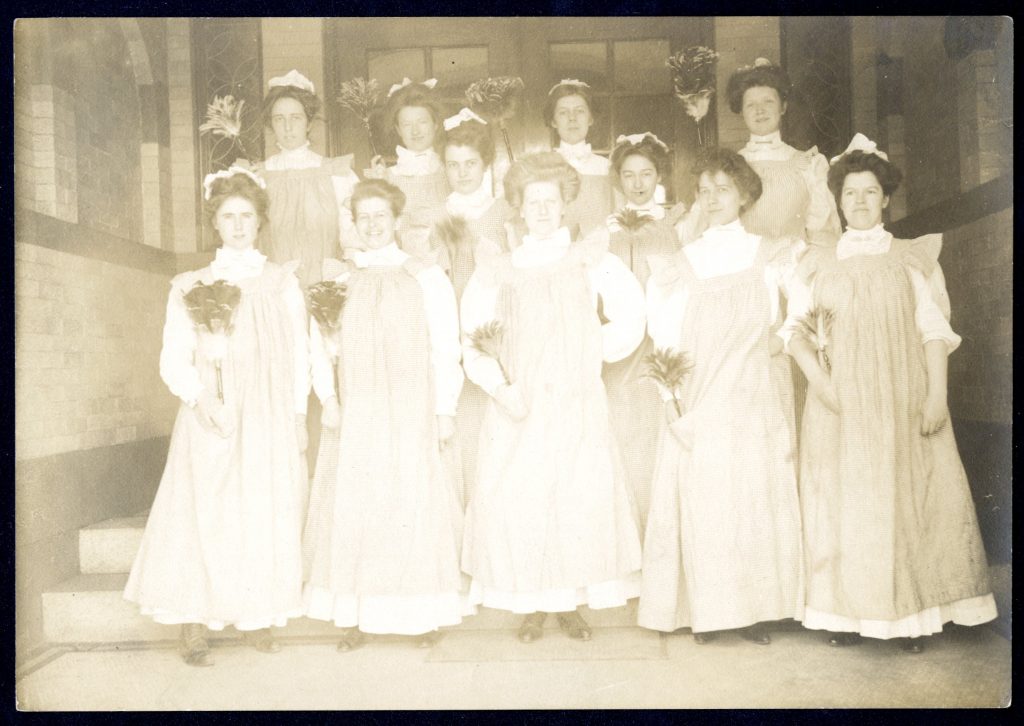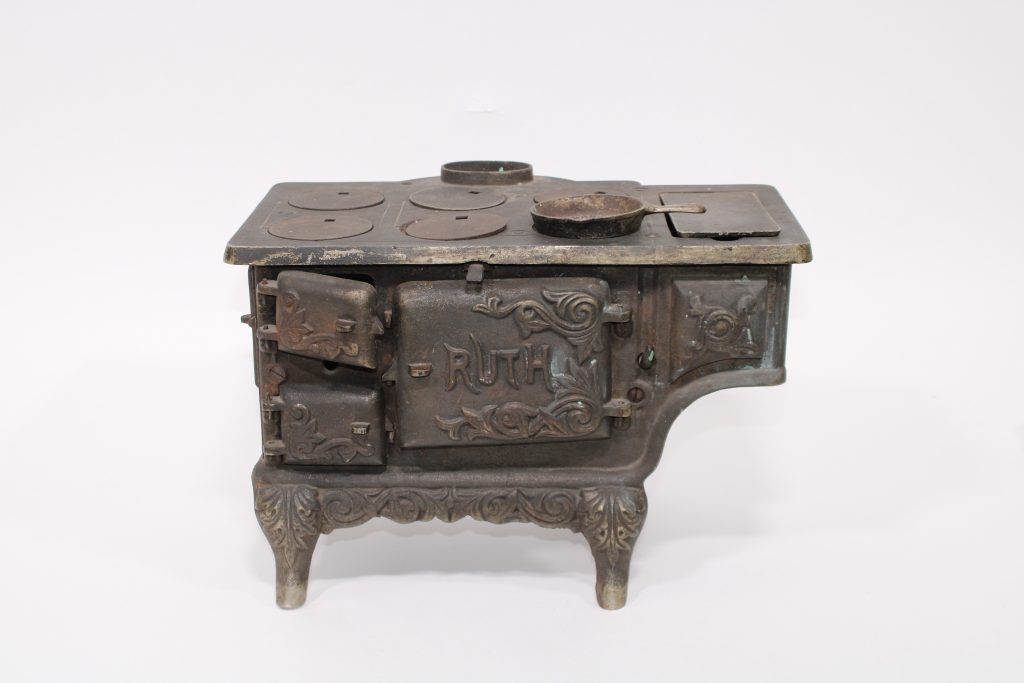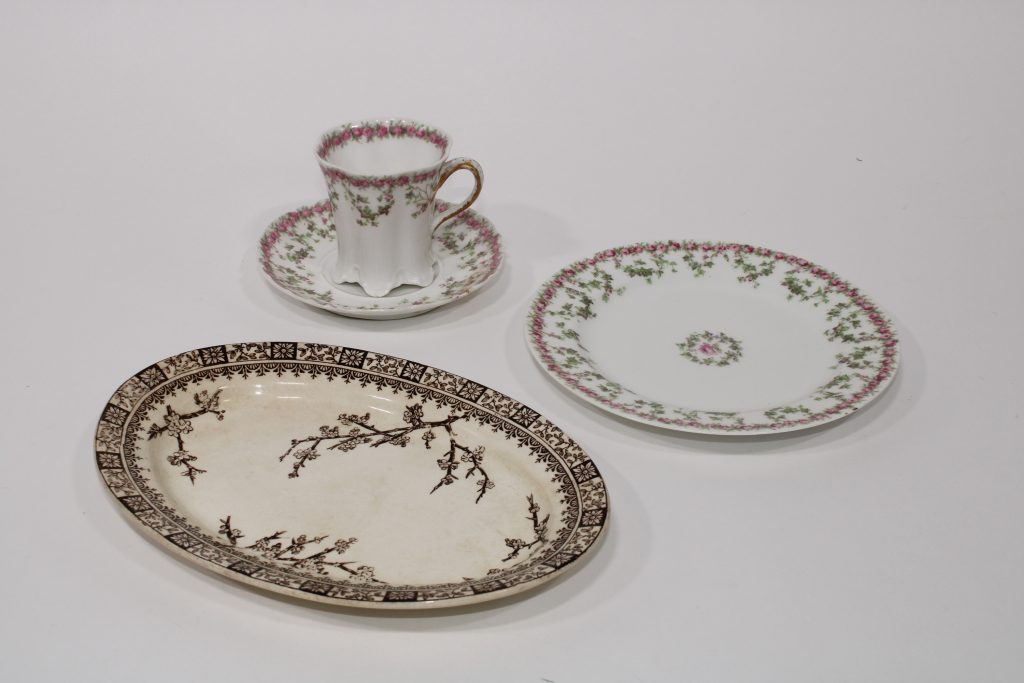When Mary Lyon opened her seminary in 1837, domestic work was at the heart of her plan. This was not primarily to save expenses as is widely thought, though that was a benefit. The main goals were independence, exercise, and democracy.
Mary Lyon wanted to ensure that her students were self-sufficient. She believed that relying on servants for daily comforts would only bring unhappiness as servants were, in her words, “often unfaithful, unreasonable, and dissatisfied.”
There was no teaching of tasks that a student didn’t already know. Students were only assigned the work that they did best, in order to make the system efficient.
The work was divided into circles, each with a specific duty. There was the “cake circle,” another was the “bread circle.” One “bread circle” went down to the kitchen at night and set the bread. The next morning a second circle molded the bread over into loaves, and, later, another circle put it into the ovens and watched it bake. That set of circles was popular.
“The domestic work would prove a sieve that would exclude the school the refuse, the indolent, the fastidious and the weakly of whom you could never make much, and leave the finest of the wheat, the energetic, the benevolent, and those whose early training had been favorable to usefulness, from whom you might expect great things.” – Mary Lyon
The “Lamp-trimming circle” was among the least favorite. Each person had to take a little tin tray with a kerosene can, scissors, and cloth, and go clean lamp after lamp. Another least favorite was the “breakfast circle,” who had to get up at dawn in summer and before dawn in winter to cook breakfast for the rest of the family. But the least coveted of duties was the fire builder who had to get up at half past four in the morning, light the fires under the tin oven, and then wake the “breakfast circle.”
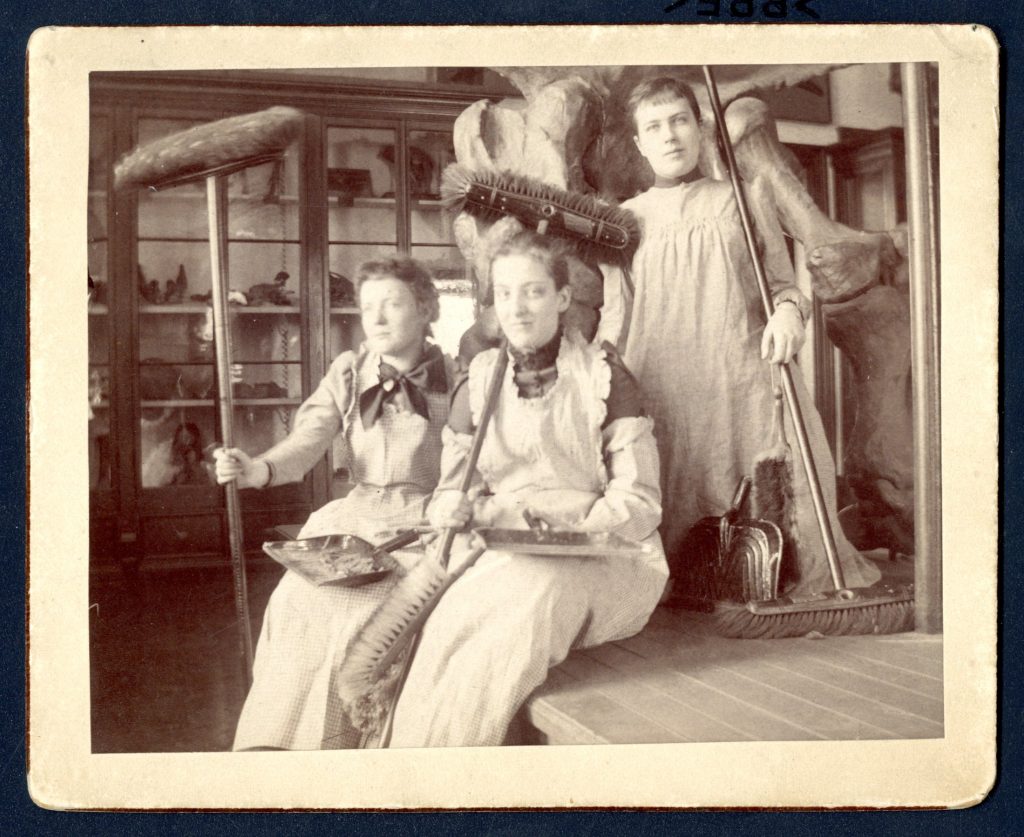
The domestic system made up a large part of social life in the early days of the Seminary. Students were not permitted to talk in the halls or libraries, and there were complaints of loneliness.
“I belong to the miscellaneous circle of domestic work, which work 70 minutes every evening. We eat apples, potatoes and pumpkins and pick over rice and raisins, which I prefer to mopping or sweeping. Every Wednesday is recreation day when we have a general time of washing floors, etc.” Melissa Usher, Class of 1856
“The old dining hall owed its homelike atmosphere to the fact that we were all one family and that hotel waitresses were no part of its regime. The nightly bread circle, the miscellaneous circle where we pared potatoes to the music of our own laughter, the dinner circle, are memories which each on of us holds dear.” -Christine Hapgood Hamilton, Class of 1897
“We might almost see in this feature of the seminary organization a function similar to that which the Greek-letter societies tried during a transitional period to fulfill.” –The Mount Holyoke, Oct. 1912
Not everybody was pleased with the system: “I have to wipe dishes every night for a year! It’s not a very new job, but in your best clothes, mind you, and over a hundred forty girls dine here!…We have to furnish our own napkins, everybody got fooled.” -Edith White, Class of 1912
